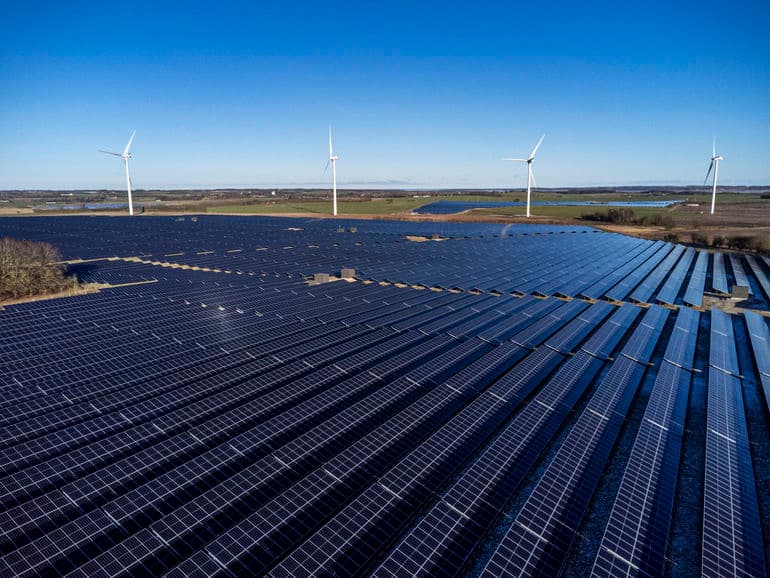
Since the climate election in 2019, there has been a particular political focus on both national and local climate initiatives.
Subsequently, the KV21 was called the first green municipal election, and for a number of years there has been a great focus on green initiatives locally. And now, a calculation from Energinet shows that the production of renewable energy has more than doubled in 13 of the country's municipalities from 2019 to 2024.
This is shown by information from Energinet's Energy Data Service, which the Ministry of Climate, Energy and Utilities has presented in a parliamentary response.
However, a majority of the municipalities that have doubled their electricity production are urban municipalities that generally come from a low starting point.
This also applies to the three high jumpers – Brøndby, Ishøj and Tårnby, which have a percentage increase of 262 percent, 233 percent and 191 percent, respectively. Together, the three municipalities had a production of 4.5 GWh in 2019, while last year they reached an output of 14.4 GWh.
In comparison, Ringkøbing-Skjern had an output of 1,446 GWh in 2024.
However, it is not only urban municipalities that can present significant progress. Aabenraa, Viborg and Faxe have all more than doubled their production of renewable energy and have each added more than 100 GWh.
Aabenraa Municipality alone has added 254.3 GWh, an increase of 250 percent, while Viborg has added 175.8 GWh (an increase of 234 percent) and Faxe 102.1 GWh (an increase of 225 percent).
Lighthouse leads the way
Randers Municipality is the municipality that has added the largest total amount of new renewable energy, 335.3 GWh – almost doubling the municipality's renewable energy production in 2019.
In general, it is traditional renewable energy municipalities that continue to pull the load.
Municipalities such as Jammerbugt, Thisted, Ringkøbing-Skjern, Holstebro and Lemvig – five of the six municipalities that produced the most green electricity in 2019 – are all in the top ten of the municipalities that have built the most new renewable energy in the period 2019-2024.
The five municipalities – together with Lolland and now also Randers – constitute the seven municipalities with the largest green output.
In addition, an increase of more than 100 GWh can also be noted in Skive and Vesthimmerland, among others.
In addition to the capacity in the individual municipalities, production also depends on the weather. Many hours of sunshine and favorable wind conditions can make a difference from year to year.
Status and decline
Business and green organizations have repeatedly spoken about a particularly challenged wind turbine market, which is why only a limited number of wind turbines have been installed in the municipalities in recent years.
There are also a number of municipalities where the expansion of renewable energy in the past five years has been limited – or even declined.
In Lolland, which in 2019 was the municipality with the second highest output, 15.2 GWh have been added – an increase of two percent.
Around the country, there are also wind turbines whose lifespans are expiring, and there are therefore a number of municipalities that have a lower output than in 2019.
One of them is Aalborg, which is decreasing by two percent and thus falls out of the green top ten. The same applies to Tønder, whose GWh output is decreasing by 6 percent, according to the calculation from Energinet's Energy Data Service.
The largest decline is on Samsø, where in 2024 there was a decline of 11 percent compared to 2019.
Text, graphics, images, sound, and other content on this website are protected under copyright law. DK Medier reserves all rights to the content, including the right to exploit the content for the purpose of text and data mining, cf. Section 11b of the Copyright Act and Article 4 of the DSM Directive.
Customers with IP agreements/major customer agreements may only share Danish Offshore Industry articles internally for the purpose of handling specific cases. Sharing in connection with specific cases refers to journaling, archiving, or similar uses.
Customers with a personal subscription/login may not share Danish Offshore Industry articles with individuals who do not themselves have a personal subscription to Danish Offshore Industry.
Any deviation from the above requires written consent from DK Medier.























